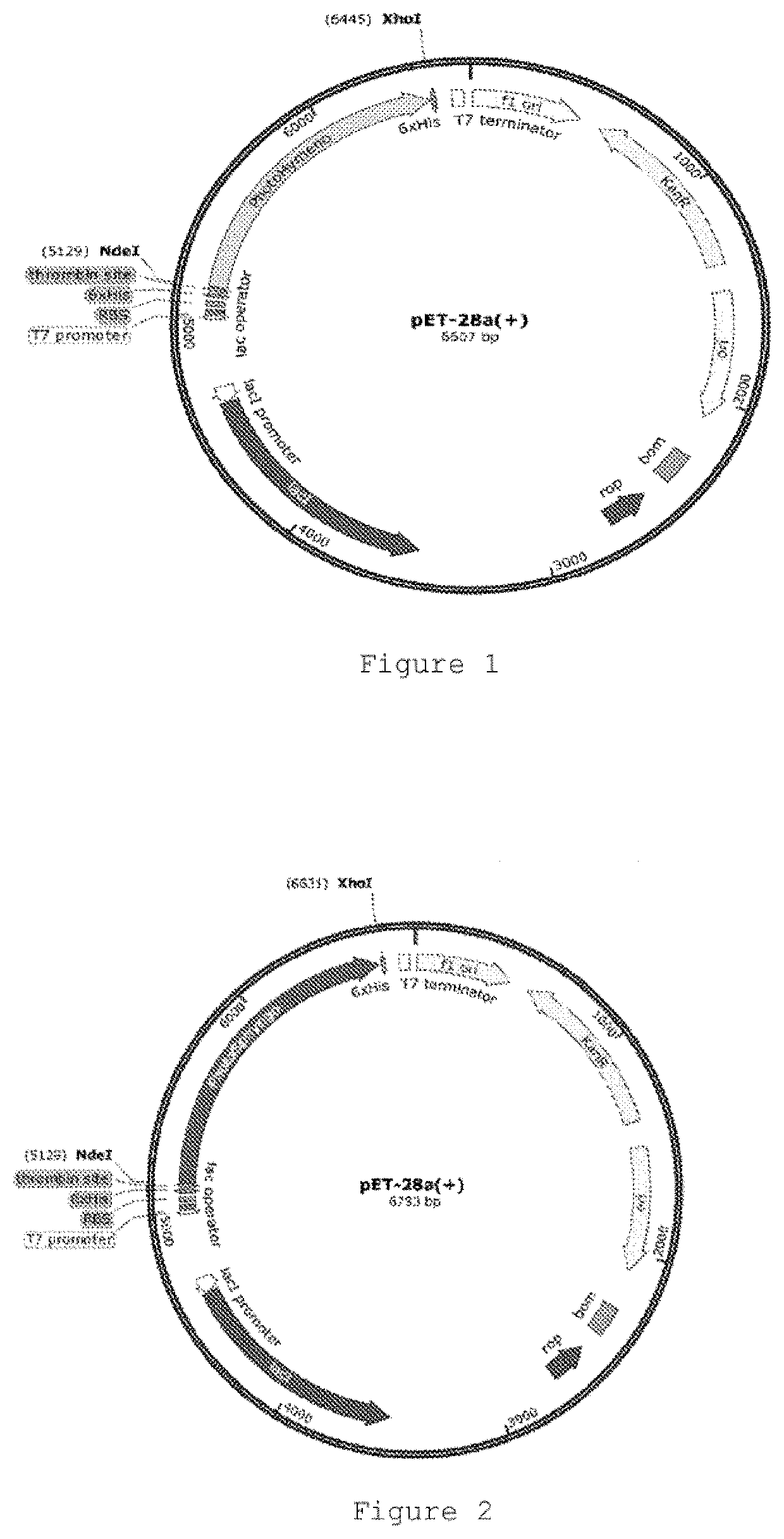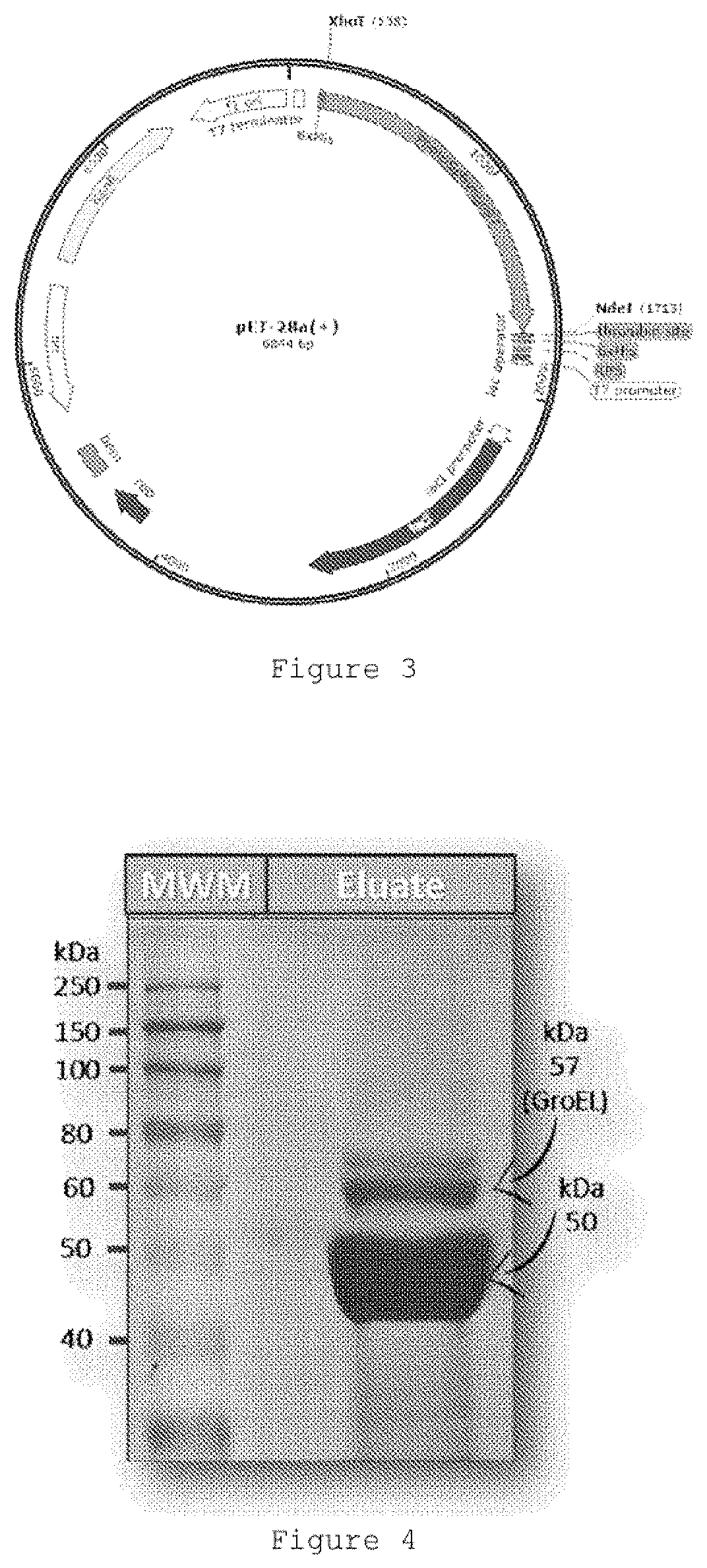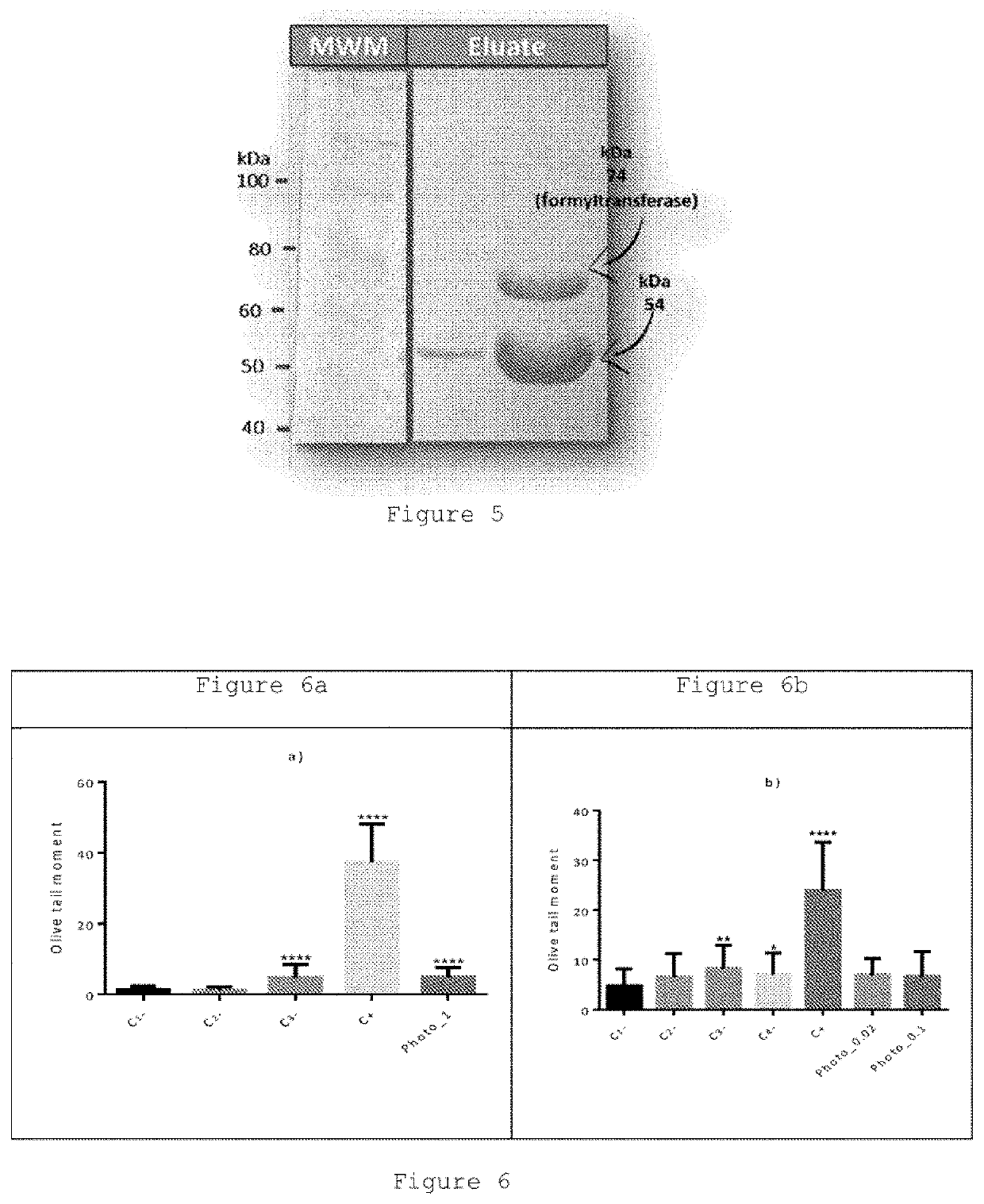Genetically modified bacteria producing three DNA repair enzymes and method for the evaluation of DNA repair activity
a technology of dna repair and gene modification, applied in the field of biotechnology, can solve the problems of skin cancer and/or skin photo-aging, and achieve the effect of high potential use and high degree of purity
- Summary
- Abstract
- Description
- Claims
- Application Information
AI Technical Summary
Benefits of technology
Problems solved by technology
Method used
Image
Examples
example 1
r Assay (Comet Assay) Using Chinese Hamster Ovary Cells
[0071]Olive tail moments and statistics. Experiments were performed using the Chinese Hamster Ovary (CHO) cell line.
[0072]It was observed that UVC-irradiated CHO cells that were treated with the recombinant photolyase in the presence of blue light had a significantly lower value of olive tail moment rather than non-photolyase treated cells, suggesting that under the assay conditions the recombinant CPD-photolyase from Hymenobacter sp. UV11 reduced the UVC-DNA damage of CHO cells. This photolyase almost completely repaired the DNA damage caused by UVC radiation.
[0073]These results were supported by the statistic test (multiple comparison ANOVA assay), where 50 comets per treatment were counted in duplicate.
TABLE 1StandardMeanerror for theTest detailsMean 1Mean 2DifferencedifferenceSignificanceSummaryC1− vs.1.3211.1320.1890.6291NonsC2−C1− vs.1.3214.838−3.5170.7705Yes****C3−C1− vs.1.32137.27−35.950.7705Yes****C+C1− vs.1.3214.869−3....
example 2
r Assay (Comet Assay) Using Immortalized Non-Tumorigenic Human Epidermal HaCat Cells
[0074]Olive tail moments and statistics experiments were performed using the HaCat cell line. Results showed reduced values of olive tail moments, similar to those values found for the cells that were not exposed to UVC radiation suggesting that under the assayed conditions the recombinant CPD-photolyase from Hymenobacter sp. UV11 reduced the JVC-DNA damage of HaCat cells almost completely.
[0075]These results wee supported by the statistic test (multiple comparison ANOVA assay), where 50 comets per treatment were counted in duplicate.
TABLE 2StandardMeanerror for theTest detailsMean 1Mean 2DifferencedifferenceSignificanceSummaryC+ vs. C−2.3480.16552.1820.03399Yes****C+ vs.2.3480.262.0880.03399Yes****Photo_2 + BLC+ vs.2.3480.24752.10.03399Yes****Photo_1.5 + BLC+ vs.2.3480.2662.0820.03399Yes****Photo_1 + BLC+ vs.2.3482.351−0.0030.03399NonsPhoto_1.5HeatC+ vs.2.3482.1370.1510.03399Yes*Photo_1.5C+ vs.2.348...
example 3
r Activity by Immunoassay
[0076]Immunochemical assay experiments, using monoclonal commercial antibodies that recognize CPDs (Table 3), also confirmed that the recombinant CPD-photolyase from Hymenobacter sp. UV11 was purified as an active DNA repairing enzyme. In these experiments, calf-thymus DNA that contains single stranded DNA, was used as substrate and the recombinant CPD-photolyase reduced the presence CPDs completely. In this assay, UVC-irradiated and non-photolyase treated DNA were used as reference or control experiments. We detected repair activity even by using 1 μg ml of the recombinant photolyase, which means that the purified enzyme was diluted 5000 fold for this experiment. When experiments were carried out in darkness or when the recombinant enzyme was denatured by heating, we did not detect repair activity. These results also show that the recombinant CPD-photolyase from Hymenobacter sp. UV11 has been purified as an active enzyme which requires light for its repair ...
PUM
| Property | Measurement | Unit |
|---|---|---|
| molecular weight | aaaaa | aaaaa |
| pH | aaaaa | aaaaa |
| pH | aaaaa | aaaaa |
Abstract
Description
Claims
Application Information
 Login to View More
Login to View More - R&D Engineer
- R&D Manager
- IP Professional
- Industry Leading Data Capabilities
- Powerful AI technology
- Patent DNA Extraction
Browse by: Latest US Patents, China's latest patents, Technical Efficacy Thesaurus, Application Domain, Technology Topic, Popular Technical Reports.
© 2024 PatSnap. All rights reserved.Legal|Privacy policy|Modern Slavery Act Transparency Statement|Sitemap|About US| Contact US: help@patsnap.com










